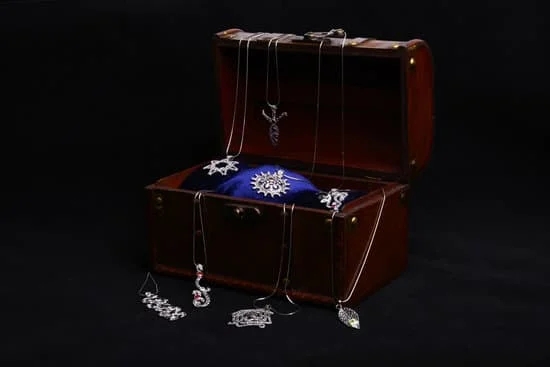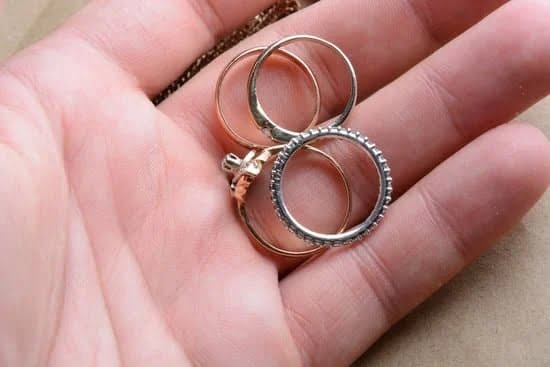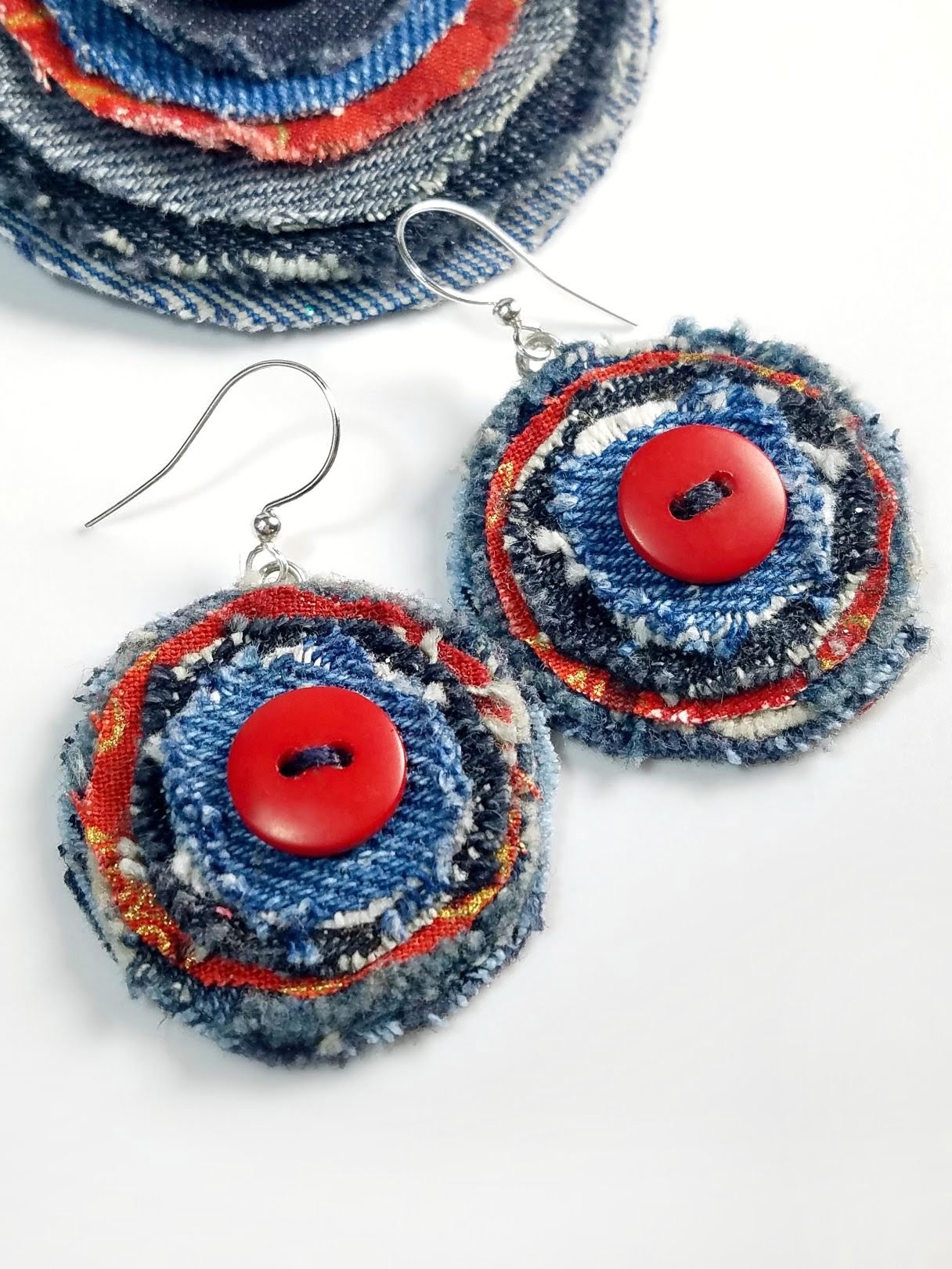Jewelry holds significant sentimental and monetary value for many individuals, making it important to protect these valuable possessions. That’s where jewelry insurance comes into play. One of the key concerns when it comes to jewelry insurance is whether it covers lost diamonds. In this article, we will delve into the world of jewelry insurance and explore the coverage it provides for lost diamonds.
Jewelry insurance offers a sense of security in knowing that your valuables are protected against potential risks such as theft, damage, or loss. It provides financial compensation in the event that your diamond goes missing. However, understanding what exactly is covered by jewelry insurance is essential to ensure you make the right decisions when selecting a policy.
Differentiating between loss and other damages is crucial in determining if your policy covers lost diamonds. While some policies may cover lost diamonds outright, others may have certain limitations and exclusions. Thus, familiarizing ourselves with these variations can help us navigate through the complexities of jewelry insurance.
Appraisals play a vital role in the coverage provided by jewelry insurance policies. They determine the estimated value of your diamond and hence affect the amount you will be compensated in case of loss or damage. So, having an up-to-date appraisal report facilitates a smoother claims process and ensures that you receive proper compensation.
In this article, we will guide you through the various aspects of jewelry insurance coverage for lost diamonds. From understanding what constitutes a lost diamond to exploring alternatives for protecting them, we aim to empower consumers like yourself to make informed decisions when it comes to insuring their precious jewelry. Let’s dive into this fascinating realm of securing our most cherished possessions.
Understanding the Coverage
Jewelry insurance is a crucial safeguard for those who own valuable pieces of jewelry, such as diamond rings or necklaces. However, it is important to have a clear understanding of what exactly is covered by jewelry insurance before purchasing a policy. While each insurance provider may have slightly different coverage options, there are some common elements that are typically covered by jewelry insurance.
First and foremost, jewelry insurance generally provides coverage for theft or loss of your diamonds. If your diamond goes missing or is stolen, you can file a claim with your insurance provider to receive compensation for its value. This coverage extends not only when the diamond is lost while it is in your possession but also when it occurs while you are traveling or away from home.
Furthermore, jewelry insurance often covers damage to your diamond caused by accidents or mishaps. For instance, if your engagement ring accidentally falls down the sink drain or is damaged due to a power tool accident, you can expect to be reimbursed for the costs of repair or replacement.
It’s important to note that not all types of damage are covered by jewelry insurance. Coverage typically does not extend to regular wear and tear, such as scratches on the surface of your diamond from everyday use.
Additionally, cosmetic damage like discoloration or fading due to exposure to chemicals may not be included in the coverage. It’s essential to carefully review the terms and conditions of your policy to understand what specific damages are covered and which ones are excluded.
By having a clear understanding of what jewelry insurance actually covers, individuals can make informed decisions before purchasing a policy. It’s recommended that consumers consult with several insurers and compare their policies’ coverage options and exclusions before selecting the one that best suits their needs. With proper knowledge and research, individuals can ensure that their precious diamonds are adequately protected should an unfortunate loss occur.
What is Considered a Lost Diamond
Understanding the Definition of a Lost Diamond
When it comes to jewelry insurance coverage, it is important to understand what is considered a lost diamond. In the context of insurance policies, a lost diamond typically refers to a diamond that has gone missing or disappeared completely. This can happen due to theft, accidental loss, or misplacement. The loss could occur anywhere – from your home to public places like hotels or even while traveling.
It is crucial to note that damage to a diamond or its setting may not necessarily be categorized as a lost diamond. Insurance companies generally have specific criteria for what constitutes a lost diamond. It often involves determining whether the diamond can be safely recovered or not. If there is any chance of finding the diamond or repairing the damage, it might not be classified as a total loss.
The Importance of Reporting Losses Promptly
In order for an insurance claim related to a lost diamond to be processed smoothly, it is vital to report the loss promptly and provide all necessary details to your insurer. This includes accurate information about when and where the loss occurred, as well as any supporting evidence such as police reports or photographs.
Delayed reporting of lost diamonds can make it more difficult for insurers to investigate and assess the claim accurately. Additionally, some insurance policies may have specific time limits within which losses need to be reported in order for coverage to apply. Failing to adhere to these timeframes may result in denied claims.
Lost Diamond vs Other Types of Damages
It is also essential to distinguish between a lost diamond and other types of damages that may affect your jewelry. A damaged stone or setting might still retain value and could potentially be repaired by professionals. In such cases, repair costs would usually fall under different coverage categories than those provided for lost diamonds.
While losing a diamond can certainly be financially distressing and emotionally upsetting, understanding what qualifies as a lost diamond within the context of your insurance policy is necessary to evaluate the coverage offered and ensure your claims are appropriately addressed.
The Role of Appraisals
Understanding the Importance of Appraisals
When it comes to insuring your valuable jewelry, one of the key factors that can greatly impact your coverage is the appraisal report. An appraisal is a formal document that provides a detailed evaluation of your diamond’s quality and value. This report not only helps determine the insurance premium but also plays a crucial role in guaranteeing proper coverage for lost diamonds.
Appraisal Requirements for Jewelry Insurance
Insurance companies typically require an up-to-date and professionally conducted appraisal report to establish the value of the diamond being insured. To ensure accurate coverage, it is essential to have your jewelry appraised by a reputable and qualified gemologist or jewelry appraiser. The appraisal should include vital information such as the carat weight, cut, clarity, color grade, and any distinguishing features unique to your diamond.
Additionally, it is important to note that appraisals should be updated regularly as diamond values can fluctuate over time. Most insurance companies recommend updating your appraisal every two to three years or whenever there are significant changes in the market value of diamonds.
The Impact on Insurance Coverage
The details provided in the appraisal report directly influence the insurance coverage you will receive for lost diamonds. If you own a diamond with extensive documentation detailing its characteristics and value accurately, you are more likely to secure appropriate coverage. On the other hand, if your diamond is uninsured or lacks a comprehensive appraisal report, you may face difficulties in receiving adequate compensation for its loss.
Appraisal reports serve as concrete evidence of a diamond’s worth, enabling insurance companies to understand its true value and determine appropriate coverage limits. It is crucial to carefully review your policy terms and conditions regarding appraisals as they may specify certain requirements or limitations related to valuations.
Limitations and Exclusions
Jewelry insurance is an essential investment for anyone who owns precious jewelry, including diamonds. However, it is important to understand that there are certain limitations and exclusions when it comes to coverage for lost diamonds. While jewelry insurance generally provides comprehensive coverage, it may not cover all scenarios in which a diamond goes missing.
One limitation to consider is the circumstances under which the diamond was lost. Jewelry insurance typically covers accidental loss, such as a diamond falling out of its setting or getting misplaced. However, if the diamond was stolen or intentionally removed from the jewelry piece, it may not be covered. It’s important to carefully review your policy to understand what types of losses are included in your coverage.
Another exclusion that may apply is if the loss occurred due to wear and tear or gradual deterioration of the jewelry piece. Insurance policies often do not cover damages caused by regular wear and tear over time, such as scratches or chips in the diamond. It’s important to properly care for your jewelry and have routine maintenance performed to minimize these risks.
Additionally, some insurance policies may have specific requirements for coverage, such as requiring you to store your jewelry in a secure location when not being worn or mandating periodic inspections of your jewelry by a professional jeweler. Failing to meet these requirements could result in a claim denial for a lost diamond.
To better understand the limitations and exclusions of your specific policy, it is crucial to carefully read through your insurance policy documents and consult with your insurance provider if you have any questions or concerns. By doing so, you can ensure that you fully comprehend the coverage provided by your policy and make informed decisions regarding protecting your precious diamonds.
Relevant Data:
| Limited Coverage Scenarios | Explanations |
|---|---|
| Stolen Diamonds | Insurance may not cover diamonds that were stolen or intentionally removed. |
| Wear and Tear | Policies often exclude damages caused by regular wear and tear, such as scratches or chips in the diamond. |
| Policy Requirements | Some policies have specific requirements for coverage, such as secure storage or periodic inspections. |
The Claims Process
Filing a lost diamond claim can be a daunting and stressful process. However, understanding the step-by-step guide to filing a claim can help ease some of the anxiety associated with this situation.
- Contact Your Insurance Provider: The first step in filing a lost diamond claim is to contact your insurance provider as soon as possible. Provide them with all the necessary details about the loss, including when and where it occurred, and how much the diamond is valued at. Be prepared to provide any supporting documentation such as purchase receipts or appraisal reports.
- File a Police Report: In many cases, insurance companies will require you to file a police report for lost or stolen jewelry. This report serves as an official record of the incident and helps verify the legitimacy of your claim. Make sure to obtain a copy of the report for your records.
- Gather Documentation: To support your claim, you’ll need to gather relevant documentation such as receipts, appraisals, photographs, and any other evidence that establishes ownership and value of the lost diamond. Providing comprehensive documentation will increase the likelihood of a successful claim.
- Submit Your Claim: Once you have all the necessary information and documentation, submit your claim to your insurance provider according to their specified method (e.g., online form, email, phone call). It’s essential to follow their instructions precisely and include all required documents to ensure prompt processing.
- Work with Claims Adjuster: After submitting your claim, you will be assigned a claims adjuster who will evaluate your case. They may request additional information or conduct further investigations if needed. Cooperate fully with the adjuster throughout this process and promptly provide any requested documentation or materials.
- Review Settlement Offer: Once all investigations are complete, your insurance company will present you with a settlement offer based on their assessment of the loss. Carefully review this offer and consult with an expert if necessary before accepting or negotiating for a better settlement.
By following these steps, you can navigate the claims process more efficiently and maximize your chances of a successful outcome. Remember to keep copies of all correspondence and documents related to your claim for future reference.
Tips for Preventing Loss
Losing a diamond can be heartbreaking, not only because of the sentimental value attached to it but also due to its financial worth. To avoid such a loss, it is crucial to take precautions and follow best practices that can help minimize the risk of losing your precious diamond. Here are some tips to consider:
- Invest in a Secure Storage Solution: One of the simplest yet most effective ways to prevent losing your diamond is by storing it in a secure location. Consider purchasing a safe or lockbox specifically designed for jewelry. These storage options often come with additional security features like combination locks or biometric access, providing an extra layer of protection.
- Take Off Your Jewelry When Engaging in Activities: Remove your diamond jewelry before engaging in activities that could increase the risk of losing or damaging it. This includes gardening, exercising, swimming, and participating in sports. It is advisable to store your jewelry in a safe place while you enjoy these activities to minimize the chances of accidental loss.
- Get Regular Inspections and Maintenance: Schedule periodic inspections and maintenance for your diamond jewelry with a reputable jeweler. They can check if there are any loose stones or prongs that may pose a risk of losing your diamond. Regular inspections can help detect potential issues early on and ensure the longevity of your precious gem.
- Be Mindful When Travelling: When traveling, always keep your diamond jewelry close to you. Avoid packing valuable items in checked luggage as they are more susceptible to theft or loss during transit. Instead, carry them with you in a secure travel pouch or wear them discreetly under clothing.
- Insure Your Jewelry: While insurance doesn’t physically prevent the loss of your diamond, it provides financial protection in case of a loss. Obtain comprehensive jewelry insurance that covers lost diamonds and ensure that you have documented proof of the value and authenticity of your diamond through an appraisal report.
By following these best practices, you can significantly reduce the risk of losing your diamond jewelry. However, accidents can still happen even with the utmost precautions. Therefore, it is crucial to have proper insurance coverage to provide additional peace of mind in case the unexpected occurs.
Alternatives to Jewelry Insurance
One alternative to jewelry insurance for protecting lost diamonds is self-insurance. Self-insurance involves setting aside a designated amount of money specifically for replacement or repair of lost or damaged jewelry. This method is preferable for individuals who have the financial means to cover such costs themselves without incurring significant financial hardship.
Another alternative option is to rely on homeowner’s or renter’s insurance policies. Some policies may provide coverage for lost or stolen jewelry, up to a certain limit. However, it’s important to review the terms and conditions of these policies, as coverage may be limited and may require additional riders or endorsements.
For those who are frequent travelers or often wear their jewelry outside of their home, travel insurance can be an option. Travel insurance typically covers the loss of personal belongings while traveling, including jewelry. However, it is important to carefully read the policy to understand any limitations and exclusions that may apply.
It’s worth noting that many credit cards offer some form of purchase protection or extended warranty coverage. This can include coverage for lost or stolen items such as diamonds. However, the coverage provided by credit cards may be limited in terms of timeframes and reimbursement limits. It is essential to review the terms and conditions of any credit card benefits before relying on them as an alternative to jewelry insurance.
In summary, there are several alternatives to traditional jewelry insurance that individuals can explore to protect against the loss of diamonds. These options include self-insurance, homeowner’s or renter’s insurance policies, travel insurance, and credit card benefits. Each option has its own advantages and limitations, so it is crucial for consumers to carefully evaluate their needs and circumstances before choosing the most appropriate method of protection for their valuable jewelry.
| Alternative Option | Description |
|---|---|
| Self-Insurance | Involves setting aside a designated amount of money specifically for replacement or repair of lost or damaged jewelry. |
| Homeowner’s or Renter’s Insurance Policies | Some policies may provide coverage for lost or stolen jewelry, up to a certain limit. Review terms and conditions carefully. |
| Travel Insurance | Covers loss of personal belongings while traveling, including jewelry. Check policy limitations and exclusions. |
| Credit Card Benefits | Many credit cards offer purchase protection or extended warranty coverage, which may include coverage for lost or stolen items such as diamonds. Review terms and conditions of credit card benefits carefully. |
Real-Life Stories
One of the most powerful ways to understand the importance and effectiveness of jewelry insurance coverage for lost diamonds is through real-life stories. Testimonials and case studies provide valuable insight into how insurance policies have protected individuals in times of loss, as well as highlight the potential challenges that can arise during the claims process.
These stories often showcase how jewelry insurance not only covers the cost of replacing a lost diamond but also provides peace of mind to those who have experienced such a significant loss. For example, one testimonial might describe how an individual accidentally dropped their engagement ring down a drain and was devastated by the loss.
However, thanks to their jewelry insurance policy, they were able to file a claim and receive full compensation to replace the diamond with one of equal value.
Additionally, case studies can provide detailed accounts of specific scenarios where individuals faced different challenges when filing a lost diamond claim. For instance, a case study might illustrate a situation where someone’s necklace was stolen while traveling abroad. This case study could explore how their insurance policy covered theft losses worldwide and explain the steps they took to successfully recover their financial losses.
By sharing these real-life stories, readers can better understand how jewelry insurance coverage for lost diamonds has real-world benefits and consequences. These testimonials and case studies help consumers make informed decisions about protecting their own precious jewelry and emphasize the importance of securing appropriate coverage to safeguard against potential losses in the future.
Conclusion
In conclusion, understanding the coverage that jewelry insurance provides is crucial for consumers when it comes to protecting their valuable possessions. While jewelry insurance does cover lost diamonds in most cases, it is important to differentiate between losses and other damages to ensure proper coverage.
Appraisal reports play a significant role in determining the value of the lost diamond and subsequently affecting the insurance coverage. However, there are limitations and exclusions to be aware of, instances where jewelry insurance may not cover lost diamonds.
To file a lost diamond claim, consumers should follow a step-by-step guide outlined by their insurance provider. This process typically involves providing necessary documentation such as police reports and appraisal reports. It’s important to note that preventive measures can be taken to minimize the risk of losing a diamond. Best practices such as regularly inspecting jewelry settings, wearing pieces mindfully, and storing them securely can help prevent loss.
While jewelry insurance is an excellent option for protecting lost diamonds, exploring alternative options is also worth considering. Some people opt for personal articles policies or adding riders to their homeowners or renters insurance policies. These alternatives can provide additional protection and might be more suitable depending on individual needs.
Frequently Asked Questions
Does insurance cover missing diamonds?
Whether insurance covers missing diamonds depends on the specific policy and its terms and conditions. Some insurance policies may provide coverage for lost or missing diamonds, while others may only cover theft or damage.
It is important to carefully review the specifics of the insurance policy to understand what types of losses are covered. If missing diamonds are covered, it is likely necessary to provide proof of ownership, such as receipts or appraisals, and possibly file a police report if the loss is due to theft.
Will my insurance cover a lost diamond ring?
The extent to which an insurance policy will cover a lost diamond ring can vary depending on the specific terms and conditions outlined in the policy. Similar to missing diamonds, some policies may cover lost diamond rings while others might not include this type of loss.
It is essential to review the insurance policy closely and contact the insurance company directly for clarification on coverage details related to lost items like diamond rings. Additionally, providing documentation such as purchase receipts or appraisals can strengthen any potential claim.
Does jewelry insurance cover if you lose it?
Jewelry insurance typically provides coverage for various types of losses, including if you lose your jewelry. However, similar to other aspects of insurance coverage, it depends on the specific terms and conditions outlined in your policy. Reviewing your policy thoroughly is crucial as it will outline what types of losses are covered and under what circumstances they are covered.
If losing your jewelry is included in coverage, maintaining valid proof of ownership through receipts or appraisals can facilitate any necessary claims processes. It’s advisable to consult with your insurance provider directly if you have any doubts or questions about the coverage pertaining to lost jewelry items.

Welcome to my jewelry blog! My name is Sarah and I am the owner of this blog.
I love making jewelry and sharing my creations with others.
So whether you’re someone who loves wearing jewelry yourself or simply enjoys learning about it, be sure to check out my blog for insightful posts on everything related to this exciting topic!





